The financial performance of the Thrive stock finished off the demonstration farm this year can be summed up as being a step in the right direction with lots of room for financial improvement.
Beef price rose by 60c/kg year on year but the cost of production also increased by the equivalent of 38c/kg carcase weight.
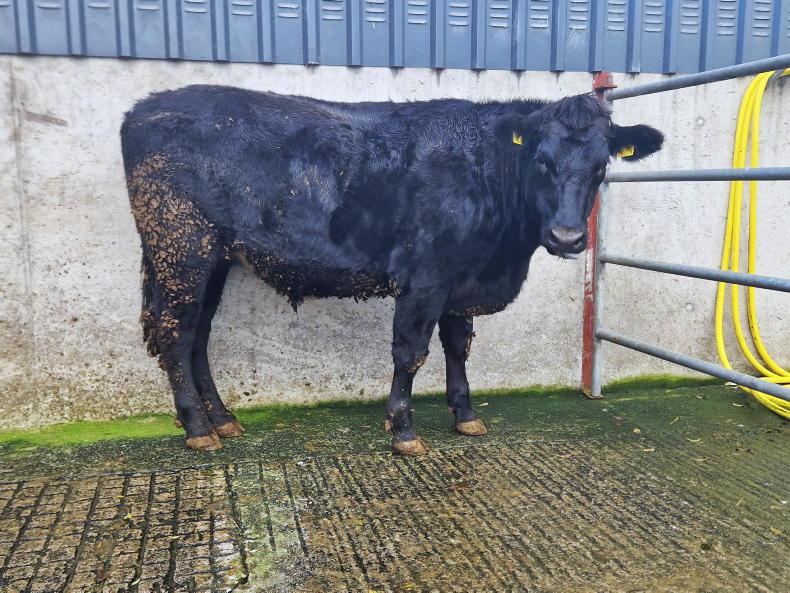
This AA4088-sired bullock weighed 620kg at 20.2 months old, had a carcase weight of 312kg, graded O-3+ and made €1,518, leaving a net margin of €294.
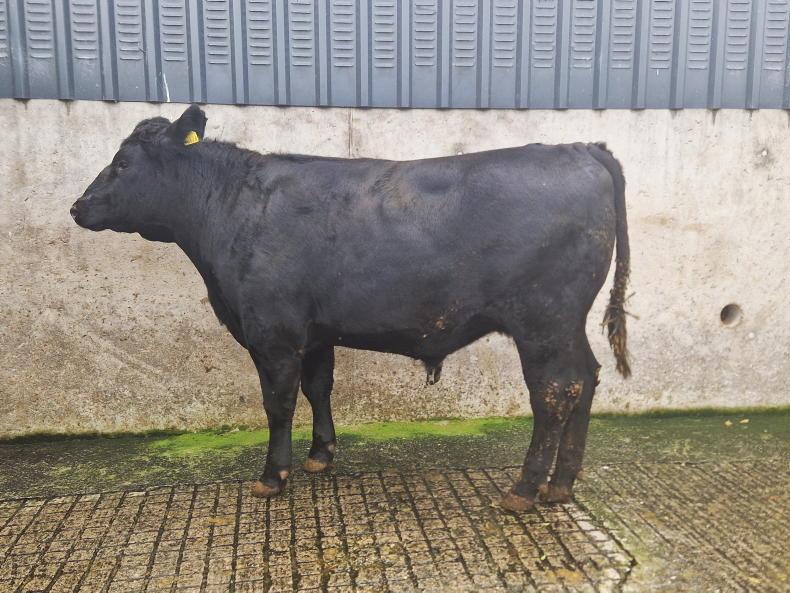
This Angus bullock, sired by JZJ and weighed 584kg at 20.5 months old, had a carcase weight of 299kg, graded O+3+ and made €1,504, leaving a €280 net margin.

This HE4105-sired bullock weighed 581kg at 20.1 months old, had a carcase weight of 291kg, graded O-3= and made €1,373, leaving a net margin of €142.
Net margin averaged €208/head, up from €132/head in 2021. Because we are recording every detail on the farm, we know down to the last kilo of meal what each individual animal has eaten during its lifetime. This allows us to calculate a gross and net margin for each individual animal that goes through the system.
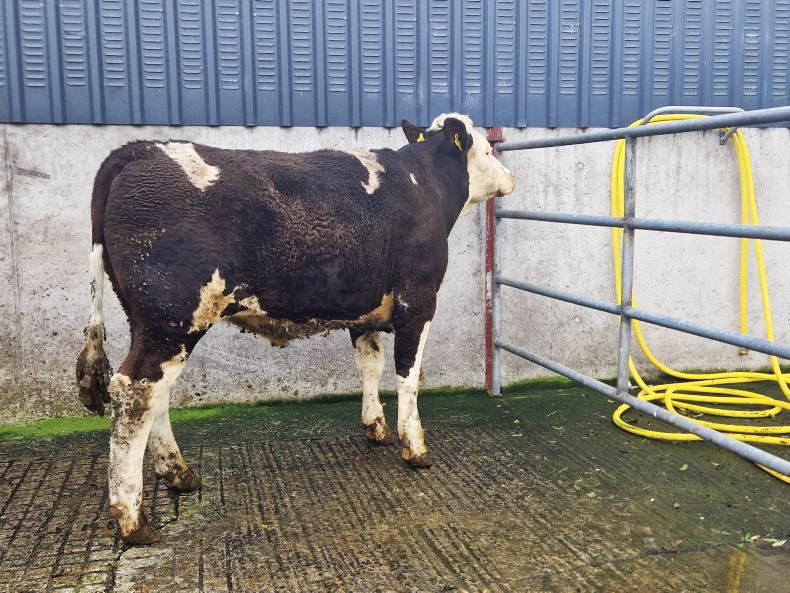
This SI5292-sired bullock weighed 644kg at 19.7 months old, had a carcase weight of 327kg graded O=3- and made €1,546, leaving a net margin of €287.

This AA4743-sired bullock was 580kg at 20.1 months old, had a carcase weight of 305kg, graded O+3= and made €1,533, leaving a net margin of €308.
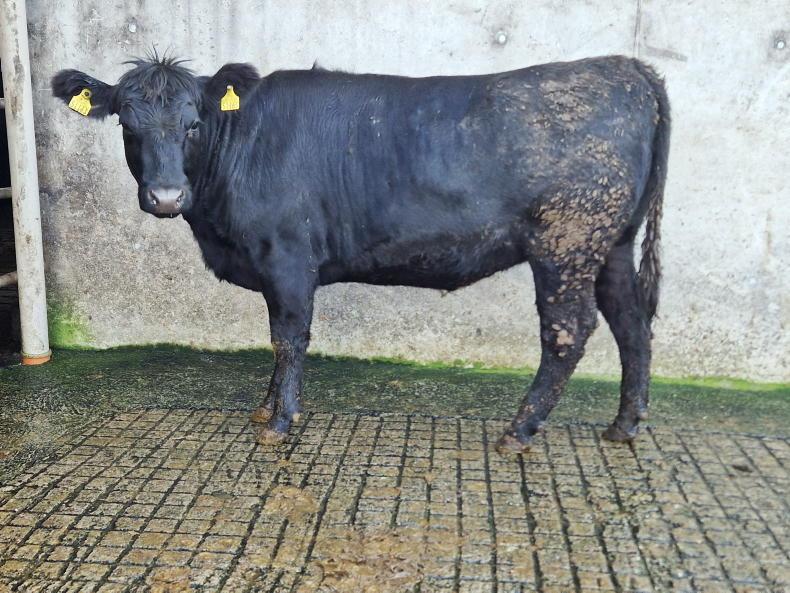
Same sire as the last one but a very different cow. This AA473-sired heifer weighed 474kg at 19.9 months, had a carcase weight of 245kg, graded O+3+ and made €1,220 leaving a net margin of €17.
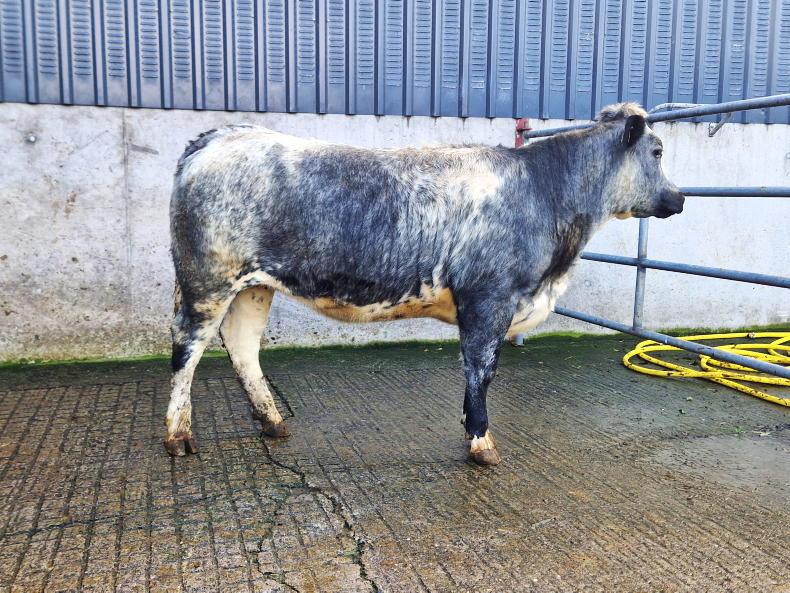
This BB4611-sired heifer weighed 564kg at 19.5 months old had a carcase weight of 293kg, graded R=3- and made €1,466, leaving a net margin of €136.
The biggest factor affecting net margin is carcase weight, closely followed by calf price, carcase conformation, fat score and the length of the finishing phase.
Seven of the 146 animals (<5%) had a negative net margin. This was mainly due to light carcase weights and poor conformation grades – the seven had a 248kg carcase and graded slightly below an O= on average.
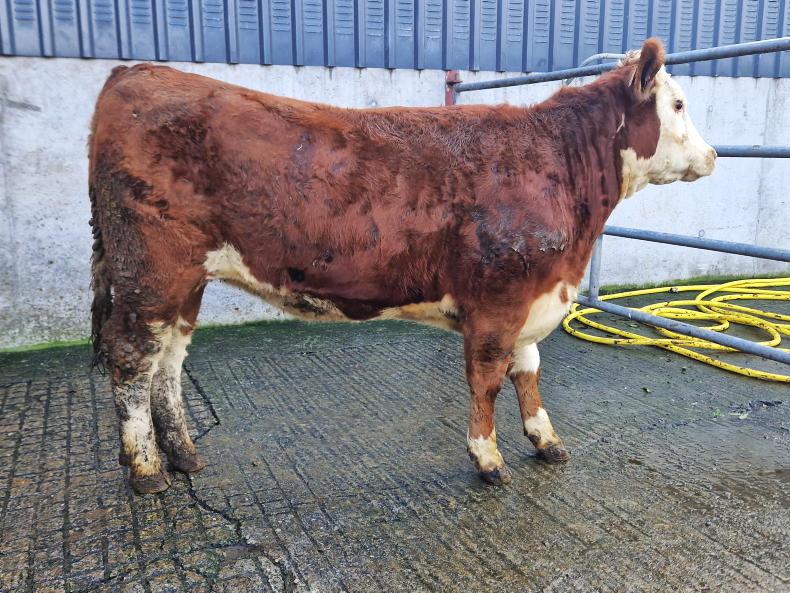
This HE4643-sired heifer weighed 515kg at 19.7 months, had a carcase weight of 258kg, graded O=3+ and made €1,218, leaving a net margin of €21.
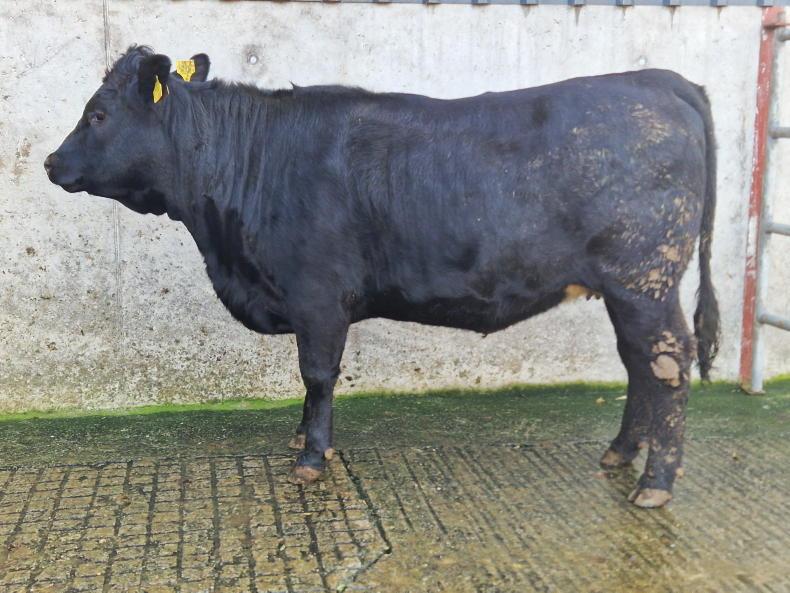
This Aubrac AU4563-sired heifer weighed 520kg at 21.4 months, had a carcase weight of 273kg, graded R-4- and made €1,350, leaving a net margin of €118.
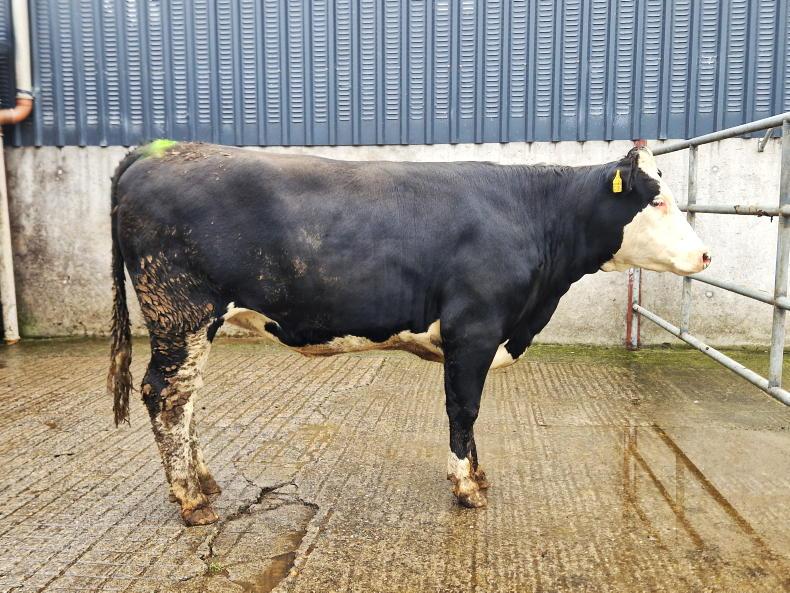
This HE5452-sired heifer weighed 542kg at 19.5 months old, had a carcase weight of 280kg, graded O=4- and made €1,377 leaving a net margin of €232.

This BB4611-sired heifer weighed 576kg at 20 months old, had a carcase weight of 299kg, graded R+3- made €1,515 and left a net margin of €185.
Meal feeding
Meal feeding is always a contentious issue. Some farmers tell us we feed too much while others reckon we are not feeding enough.
To achieve a substantial carcase weight (average 274kg heifers, 302kg bullocks) at a 20-month slaughter age we feel the current level of meal feeding is needed.
Looking at the overall picture, meal costs account for 23% of all variable costs within the system or 16% of the carcase value. This equates to a lifetime intake ranging from 479kg for the earliest slaughtered heifers up to 694kg for the last of the bullocks to be drafted.
The average is 598kg which can be broken down into 45kg during the rearing phase, 191kg at grass during the first grazing season (1kg/day), 135kg fed during the first winter (front loaded), and an average of 227kg fed during the finishing phase (3kg/day heifer and 4kg/day bullocks).
If the system was to finish cattle out of the shed at 24 months old, then the kilo of meal at grass during the first grazing season would be removed.
Looking at the spread of net margins there is huge variation within sex, breed, and even sire of animals. This is the reason farmers need more information in the form of the commercial beef value (CBV) of the animal at the point of purchase.
The financial performance of the Thrive stock finished off the demonstration farm this year can be summed up as being a step in the right direction with lots of room for financial improvement.
Beef price rose by 60c/kg year on year but the cost of production also increased by the equivalent of 38c/kg carcase weight.

This AA4088-sired bullock weighed 620kg at 20.2 months old, had a carcase weight of 312kg, graded O-3+ and made €1,518, leaving a net margin of €294.

This Angus bullock, sired by JZJ and weighed 584kg at 20.5 months old, had a carcase weight of 299kg, graded O+3+ and made €1,504, leaving a €280 net margin.

This HE4105-sired bullock weighed 581kg at 20.1 months old, had a carcase weight of 291kg, graded O-3= and made €1,373, leaving a net margin of €142.
Net margin averaged €208/head, up from €132/head in 2021. Because we are recording every detail on the farm, we know down to the last kilo of meal what each individual animal has eaten during its lifetime. This allows us to calculate a gross and net margin for each individual animal that goes through the system.

This SI5292-sired bullock weighed 644kg at 19.7 months old, had a carcase weight of 327kg graded O=3- and made €1,546, leaving a net margin of €287.

This AA4743-sired bullock was 580kg at 20.1 months old, had a carcase weight of 305kg, graded O+3= and made €1,533, leaving a net margin of €308.

Same sire as the last one but a very different cow. This AA473-sired heifer weighed 474kg at 19.9 months, had a carcase weight of 245kg, graded O+3+ and made €1,220 leaving a net margin of €17.

This BB4611-sired heifer weighed 564kg at 19.5 months old had a carcase weight of 293kg, graded R=3- and made €1,466, leaving a net margin of €136.
The biggest factor affecting net margin is carcase weight, closely followed by calf price, carcase conformation, fat score and the length of the finishing phase.
Seven of the 146 animals (<5%) had a negative net margin. This was mainly due to light carcase weights and poor conformation grades – the seven had a 248kg carcase and graded slightly below an O= on average.

This HE4643-sired heifer weighed 515kg at 19.7 months, had a carcase weight of 258kg, graded O=3+ and made €1,218, leaving a net margin of €21.

This Aubrac AU4563-sired heifer weighed 520kg at 21.4 months, had a carcase weight of 273kg, graded R-4- and made €1,350, leaving a net margin of €118.

This HE5452-sired heifer weighed 542kg at 19.5 months old, had a carcase weight of 280kg, graded O=4- and made €1,377 leaving a net margin of €232.

This BB4611-sired heifer weighed 576kg at 20 months old, had a carcase weight of 299kg, graded R+3- made €1,515 and left a net margin of €185.
Meal feeding
Meal feeding is always a contentious issue. Some farmers tell us we feed too much while others reckon we are not feeding enough.
To achieve a substantial carcase weight (average 274kg heifers, 302kg bullocks) at a 20-month slaughter age we feel the current level of meal feeding is needed.
Looking at the overall picture, meal costs account for 23% of all variable costs within the system or 16% of the carcase value. This equates to a lifetime intake ranging from 479kg for the earliest slaughtered heifers up to 694kg for the last of the bullocks to be drafted.
The average is 598kg which can be broken down into 45kg during the rearing phase, 191kg at grass during the first grazing season (1kg/day), 135kg fed during the first winter (front loaded), and an average of 227kg fed during the finishing phase (3kg/day heifer and 4kg/day bullocks).
If the system was to finish cattle out of the shed at 24 months old, then the kilo of meal at grass during the first grazing season would be removed.
Looking at the spread of net margins there is huge variation within sex, breed, and even sire of animals. This is the reason farmers need more information in the form of the commercial beef value (CBV) of the animal at the point of purchase.


















 This is a subscriber-only article
This is a subscriber-only article











SHARING OPTIONS: